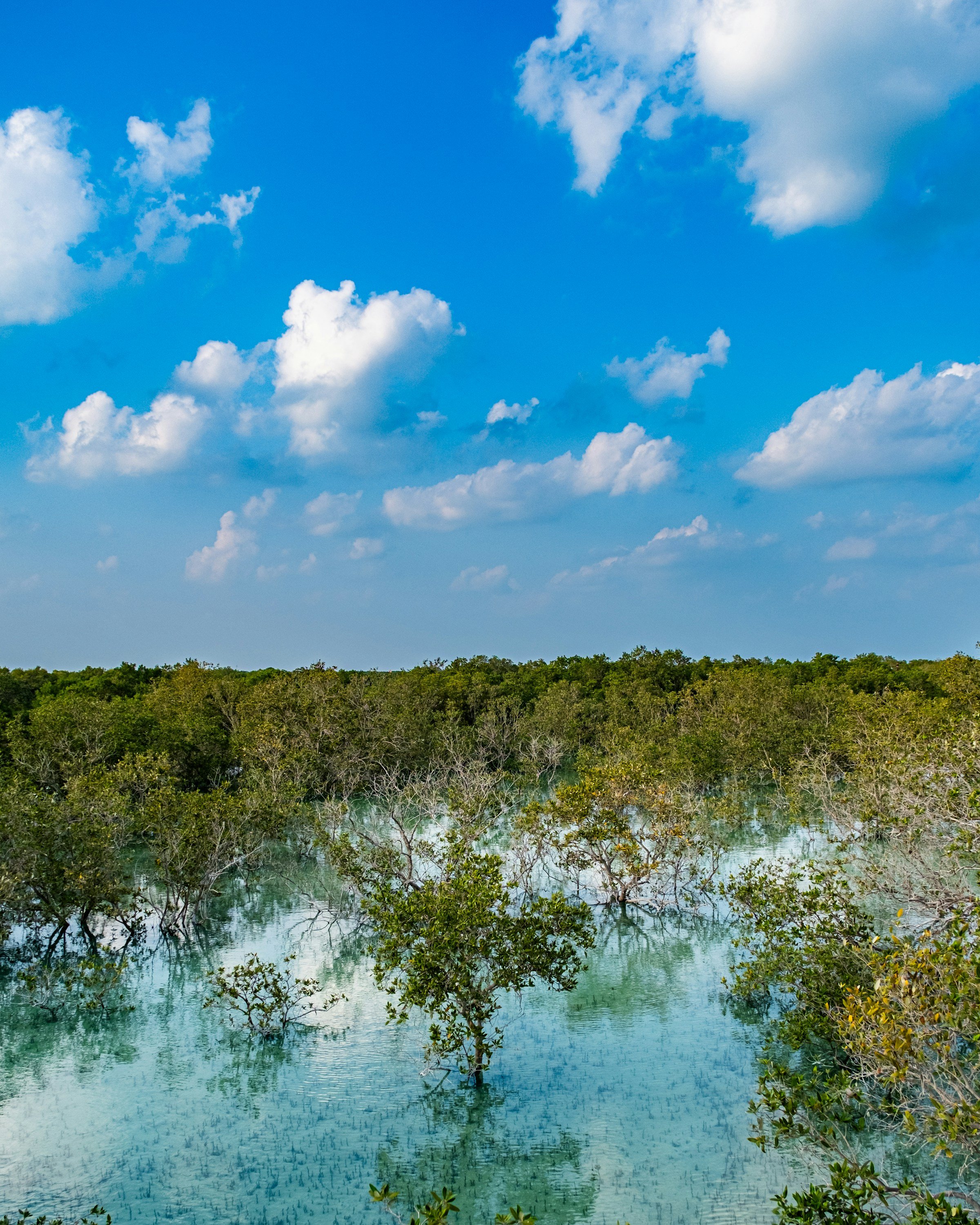Nature as National Asset: How the Middle East Is Turning Biodiversity into Economic Opportunity
By Deborah Lehr
September 3, 2025
For decades, the Middle East’s biodiversity was overlooked
Not because it lacked value, but because that value was not fully recognized. Today, countries across the region are reframing nature as a strategic national asset. From the Arabian deserts and Red Sea coral reefs to the mangrove coastlines of the UAE and Oman’s marine reserves, the region is demonstrating that natural capital is not just an ecological inheritance. It is emerging as a foundation for economic diversification, job creation, sustainable tourism, and national branding.
The vibrant waters of NEOM are home to some of the most picturesque and pristine islands in the Red Sea. Islands of NEOM, Saudi Arabia (Unsplash/ NEOM)
Saudi Arabia, the UAE, Oman, and other nations are investing in restoring landscapes, protecting endangered species, planting trees, and building new industries rooted in ecological resilience.
Under frameworks like Vision 2030, the Saudi Green Initiative, the Middle East Green Initiative, the UAE’s blue carbon programs, and Oman’s marine protection plans, biodiversity is being treated as a platform for long-term prosperity. Nature is no longer seen as a constraint on growth—it is becoming integral to growth strategies.



This shift is visible in projects that blend conservation with commerce and cultural identity.
An antelope in the Desert Safari Dubai, Dubai, Emirados Árabes Unidos (Unsplash / Allan Rodrigues)
The Saudi region of AlUla, for example, combines the restoration of endangered species like the Arabian leopard with heritage tourism that highlights its ancient Nabatean sites. This is not only boosting the local economy but also positioning Saudi Arabia as a destination where history, culture, and nature converge.
Similarly, the UAE’s 100 million mangrove initiative is restoring vital coastal ecosystems that support carbon storage, fisheries, and coastal protection—all while enhancing the country’s sustainability brand. Oman’s marine protected areas are conserving biodiversity and creating new opportunities for sustainable fisheries and eco-tourism. Its planned Botanical Gardens will be a feature the biodiversity of its regions as a centerpiece of Oman’s own image.

Tabuk, Saudi Arabia (Unsplash / SALEH)
These efforts are more than environmental good practice
They are tools for building national brands that project modernity, responsibility, and innovation.
In a competitive global economy, countries are increasingly differentiating themselves through commitments to sustainability and ecological stewardship. The Middle East’s new biodiversity agenda is central to these ambitions.
Importantly, this transformation opens the door to greater private sector engagement and innovation. Opportunities are expanding across sectors—from nature-positive tourism and sustainable fisheries to coral reef regeneration, desert rewilding, and carbon credit trading linked to restored ecosystems. Investors are increasingly recognizing that natural capital can generate real returns while delivering environmental benefits.
Nature finance is key to translating this potential into action
The region is beginning to explore biodiversity bonds, green sukuk, and blended finance vehicles that can unlock private capital for conservation-linked development. Public-private partnerships in nature-positive infrastructure, tourism, and reforestation offer another path forward. For these efforts to scale, governments, financial institutions, and companies will need to work together to build pipelines of investable projects that align with both ecological and economic goals.
Alain-Richard Donwahi, COP 15 President, passes the gavel to Abdulrahman Abdulmohsen AlFadley, COP 16 President ( IISD/ENB / Anastasia Rodopoulou)
The Middle East’s biodiversity shift is also strengthening its environmental diplomacy.
Hosting major platforms like COP28, UNCCD COP16, and regional green summits reflects not just ambition, but a recognition that biodiversity protection is fundamental to economic and climate security. Through partnerships on land restoration, species protection, and climate adaptation, the region is contributing to global solutions while advancing its own interests.
Women are playing a central role in shaping this emerging agenda
Yasmine Fouad, Executive Secretary of the UNCCD, and Razan Al Mubarak, President of the IUCN, represent a new generation of Arab leadership in biodiversity conservation and environmental diplomacy. Their work underscores how the Middle East is not just participating in the global biodiversity dialogue—it is helping to lead it.
Of course, challenges and contradictions remain. The pace of urban expansion, continued development of fossil fuels, infrastructure development, and megaprojects will continue to test the region’s ability to balance growth with ecological stewardship. Nature finance is still in its early stages, and biodiversity remains underfunded compared to other climate priorities. But the direction of travel appears clear: biodiversity is becoming embedded in national visions, economic strategies, and regional cooperation frameworks.
If successful, the Middle East could offer a new model for 21st century development—
one where natural capital is protected, valued, and leveraged to drive resilience, prosperity, and regional stability. In a world grappling with climate change and biodiversity loss, this emerging approach deserves global attention—not only for what it says about the region’s future, but for what it signals about new forms of environmental leadership.
Published by Basilinna Institute. All rights reserved.






